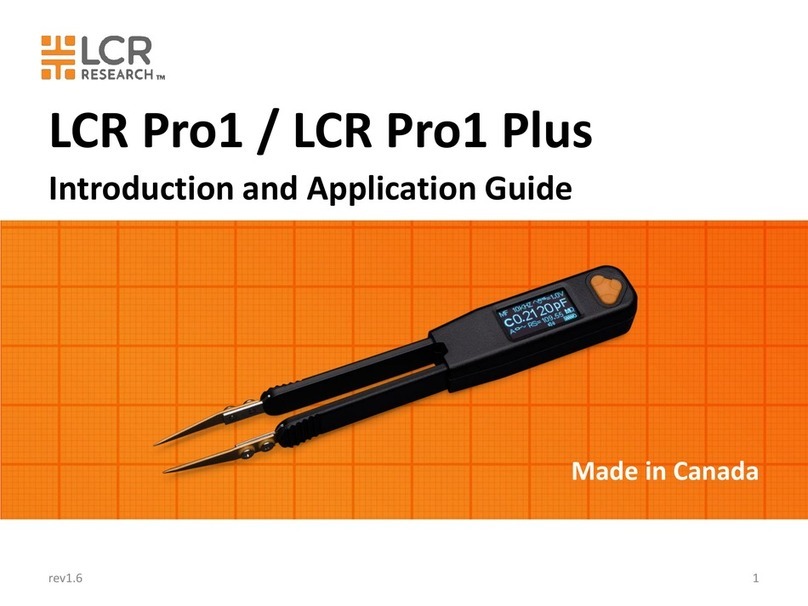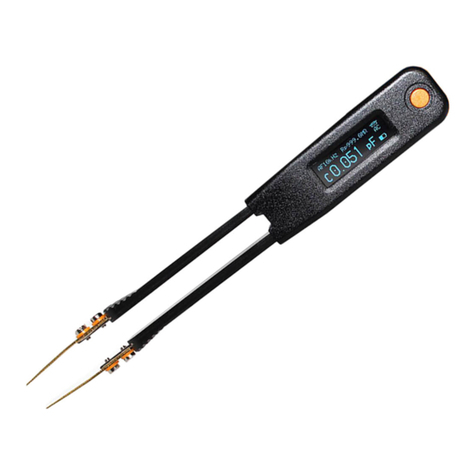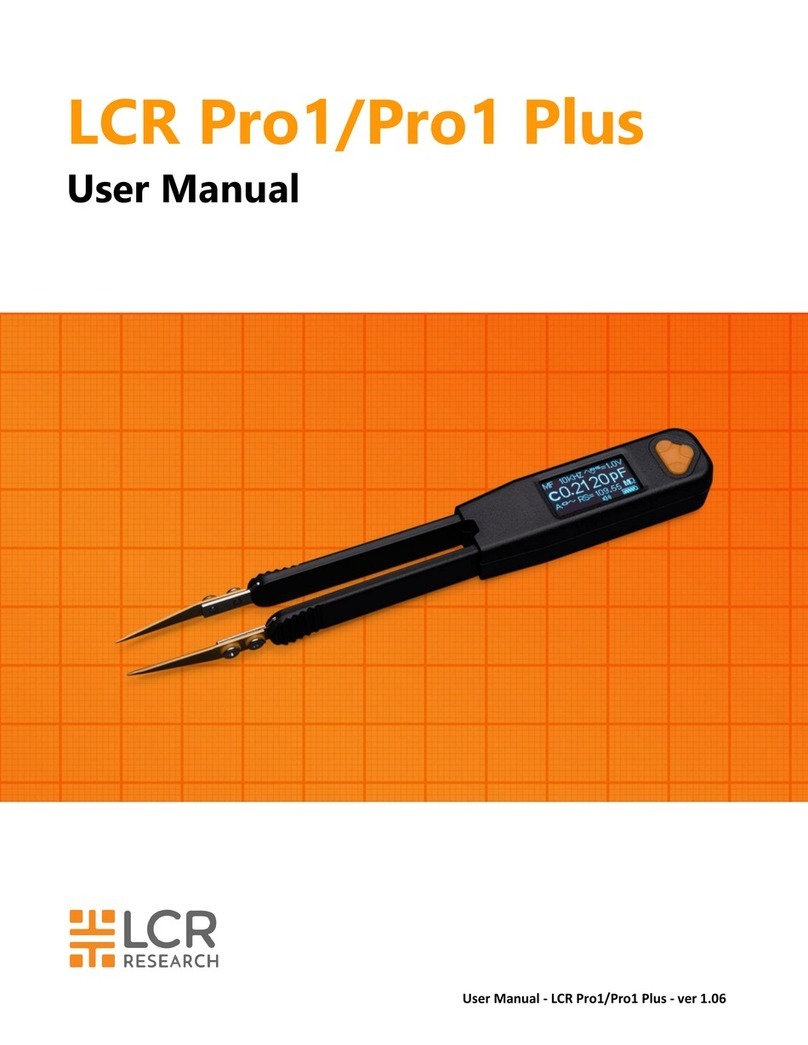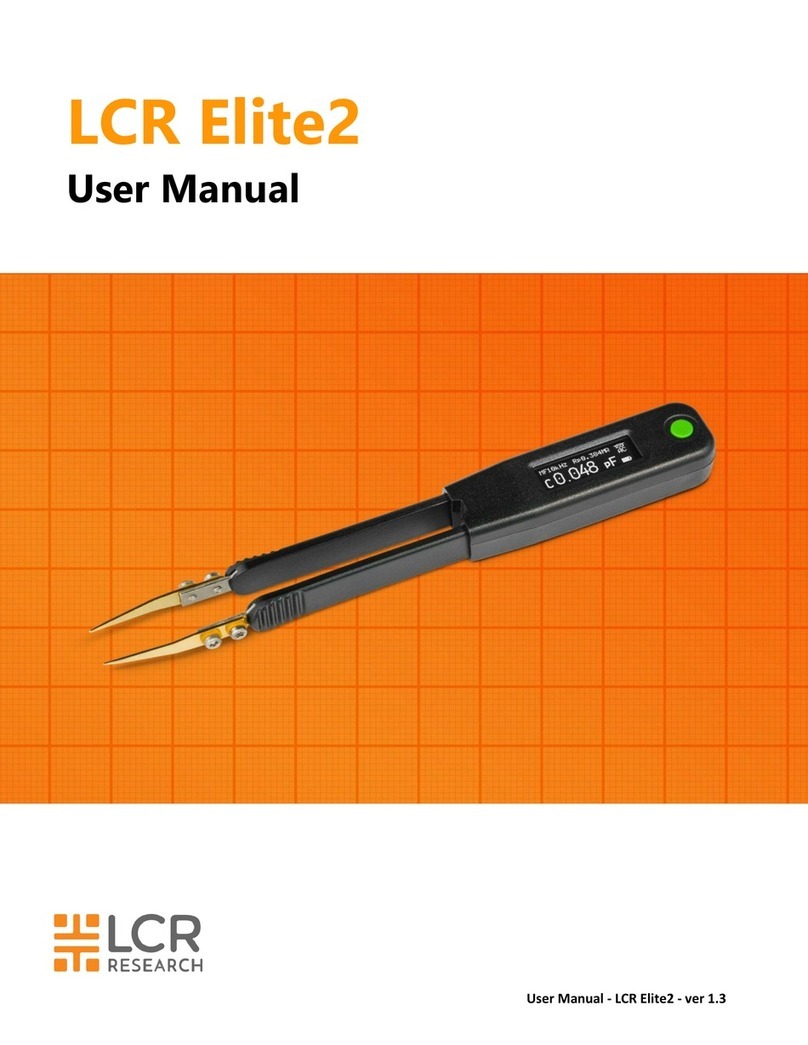
LQ-9101 User Manual
The accuracy of L C in addition to the impedance also relates to D (or Q):
Ae(LC) = Ae *√(1+ D^2)
When D<0.1 Ae(LC) ≈ Ae
the accuracy of R in addition to impedance is also related to D(or Q):
Ae(R) = Ae* *√(1+ Q^2)
When Q<0.1 In the case of Ae(R) ≈ Ae
DC Q can be considered to be innitely small ie equal to Ae
D. Accuracy
De = Ae/100 ---- Condition D<0.1
De = (1+D)*Ae/100 -- - Condition D> 0.1
Operation and use of the fourth part
Warning: When measuring should avoid the external signal DC voltage is added to the measuring mouth
prevent the bridge from damaging.
4.1 The charging
bridge has a built-in 450mAH polymer lithium-ion battery. The charging interface is a 3.5mm DC
socket. Input 5V DC power the positive pole of the core through a random USB to DC charging cable
can be connected to the computer USB port to charge you can also use a mobile phone charger with USB
charging output charging treasure and other charging power. The charging indicator red indicates
charging and green indicates charging is complete.
After the built-in rechargeable battery is fully charged the accumulated time for the use of the bridge for
normal measurement is not less than 8 hours. Allows the bridge to be used while charging without
aecting the stability and accuracy of the measurement.
4.2 startup and shutdown
bridge supply controlled by a key. Long press the key the built-in buzzer "drip" turn on and then long
press the shutdown. The bridge power supply has an automatic shutdown feature. The typical automatic
shutdown time is 15 minutes. The built-in buzzer one minute before the automatic shutdown prompts two
short “drip” sounds to remind the user that the user is about to shut down. If you do not want to shut
down press the power control button briey. The buzzer will beep once this time the automatic shutdown
will be eliminated the automatic shutdown time will be re-timed and the state will continue to be turned
on. After power on the display is on the word “WELCOME” appears and the copyright information
appears. Then it enters the measurement state.
4.3 Clearing the Short Circuit and Clearing the Open Circuit
4.3.1 Clearing the Basic Description

































